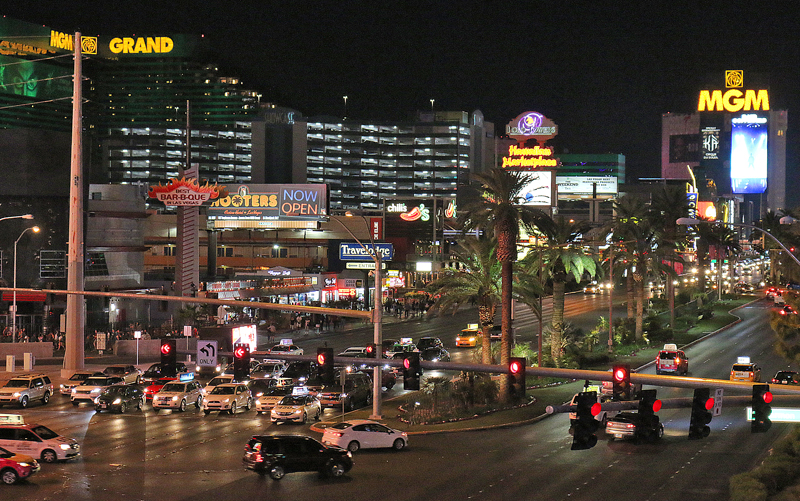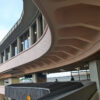In some locations around the world, they are seen everywhere: excessive displays of advertisements and billboards; a tangled web of cables and electrical power lines; the accumulation of garbage and refuse; and other artifacts which potentially “pollute” those places…
How 8 Famous Travel Destinations Would Appear Without “Visual Pollution”
…but how would eight famous travel destinations appear without to what is being referred as “visual pollution”?
To find out the answer to that question and to create these unlittered versions of famous cities, a list of some of the most common types of visual pollution were gathered — such as advertisements, branding, cables, litter, and more. A list of some of the most populated — and visually polluted — locations in the world was then curated.
A visual artist retouched out the details that caused “visual pollution”. Multiple reference images were used — including images from the past — to visualize how these famous locations once looked; and to reimagine how they could look without visual pollution.
This article written by G. John Cole for HouseFresh gives more details about what eight famous travel destinations would look like without “visual pollution”; and I have been given express written permission to use the maps and the verbatim text from the aforementioned article in this article. While HouseFresh has endeavored to ensure the information provided is accurate and current, it cannot guarantee it. Neither HouseFresh nor The Gate accept any liability — and assume no responsibility — for any and all information which is presented in this article.
With that disclaimer out of the way, here is the article.
What Are The 8 Famous Travel Destinations With “Visual Pollution”?
We are an image culture – so what happens when our visual field is littered with billboards, cables, building sites, and actual litter?
It’s called visual pollution, and yes, it looks bad. But it also leads to anxiety, fatigue, and depression. Our brains process images at an astonishing pace: bombarding them with complex, unwanted, and conflicting sights takes its toll. And all this visual noise is particularly galling when you think of the natural and architectural beauty that it masks.
This phenomenon also wreaks economic and sociological harm. Visual pollution impacts house pricesand the economic and historical value of heritage sites. The ‘same-ification’ of urban areas with advertising and cheap, mass-produced infrastructure reduces civic pride and damages our sense of identity. These blights cheapen the very fabric of our daily lives.
So, inspired by Rinat Rizvanov’s images of Times Square without the ads, HouseFresh decided to freshen up the view of eight celebrated but tarnished locations: famous places that get a new life when you peel back the visual pollution.
Shibuya Crossing, Japan
With 2,500 pedestrians on the crossing at any time, why shouldn’t CapitalismTM monetize all those eyes with glowing adverts? Perhaps because the pink and purple sunsets that hide the crossing of the ancient Uda and Onden rivers beneath the road deserve better.
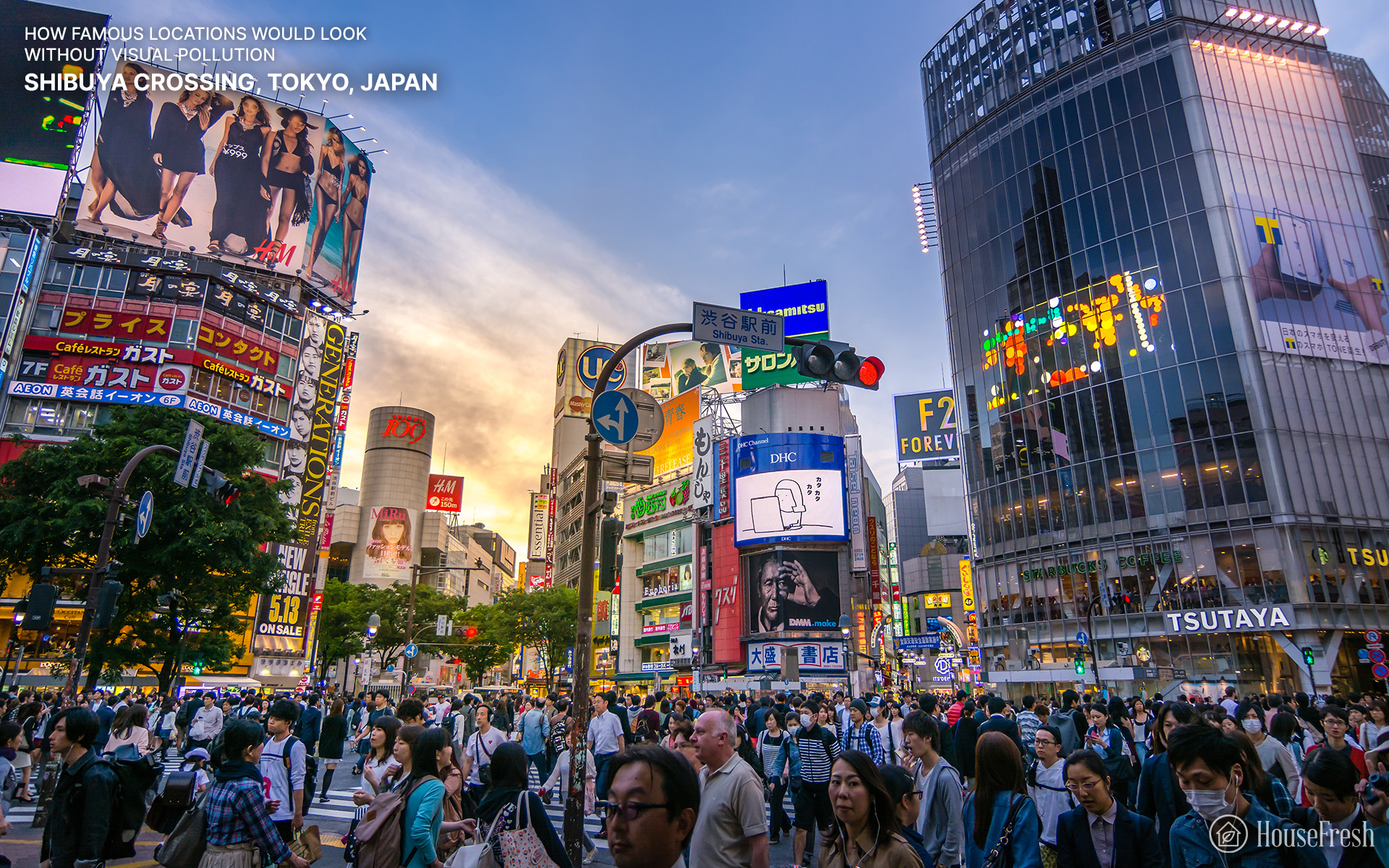
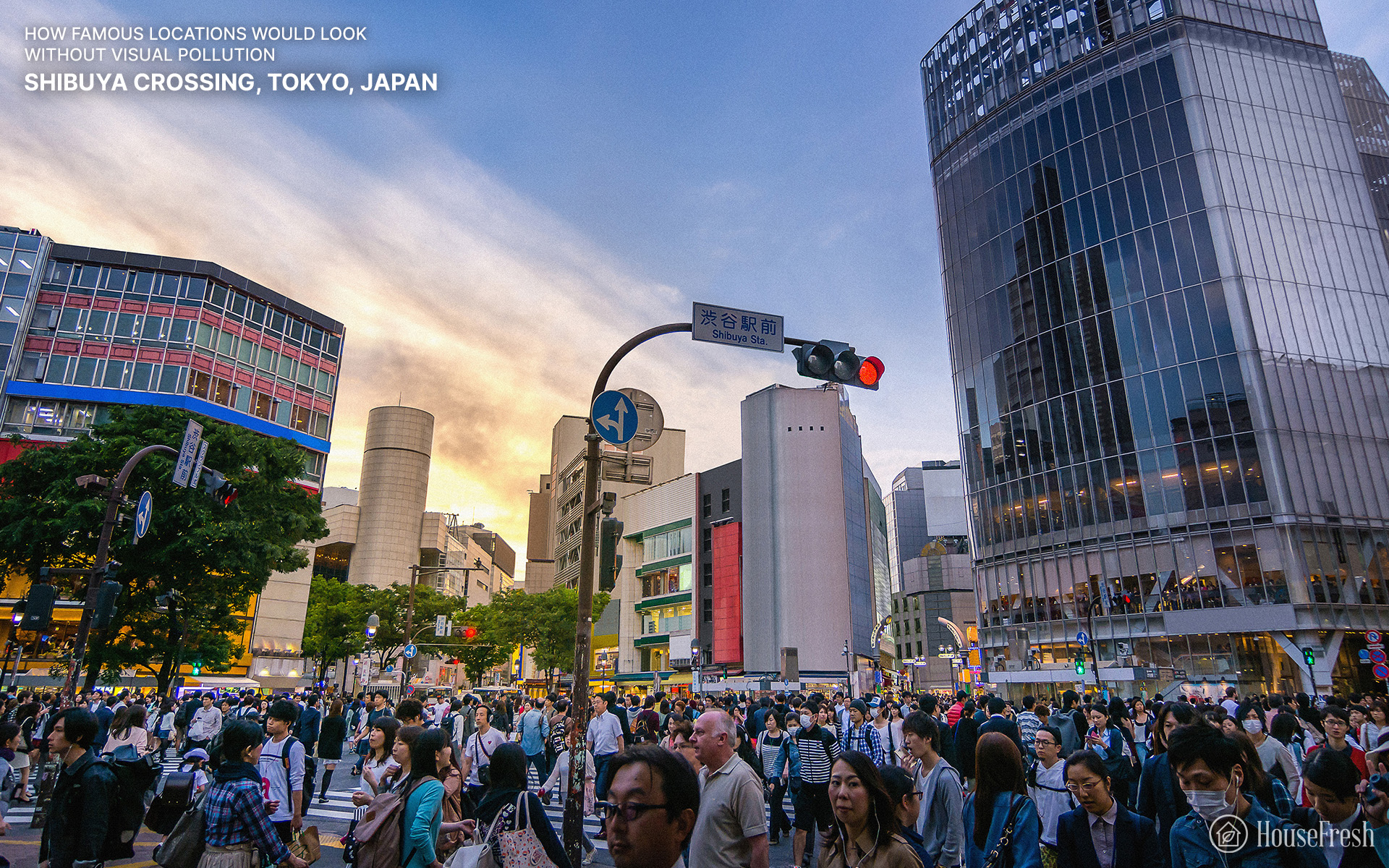
Like Times Square, visual ‘pollution’ is part of the identity of Shibuya Crossing. But how might the junction look with a more sensitive approach to aestheticizing the blander buildings – particularly an approach that minimized its round-the-clock light pollution?
Mong Kok District, Hong Kong
Hong Kong’s neon signs are integral to the “image and heritage” of the city, according to some. But many such boards are illegal structures that are not just distracting but physically dangerous. As the world’s most densely populated place, getting buyers’ attention in the shopping district of Mong Kok requires merchants to shine their lights brightly.
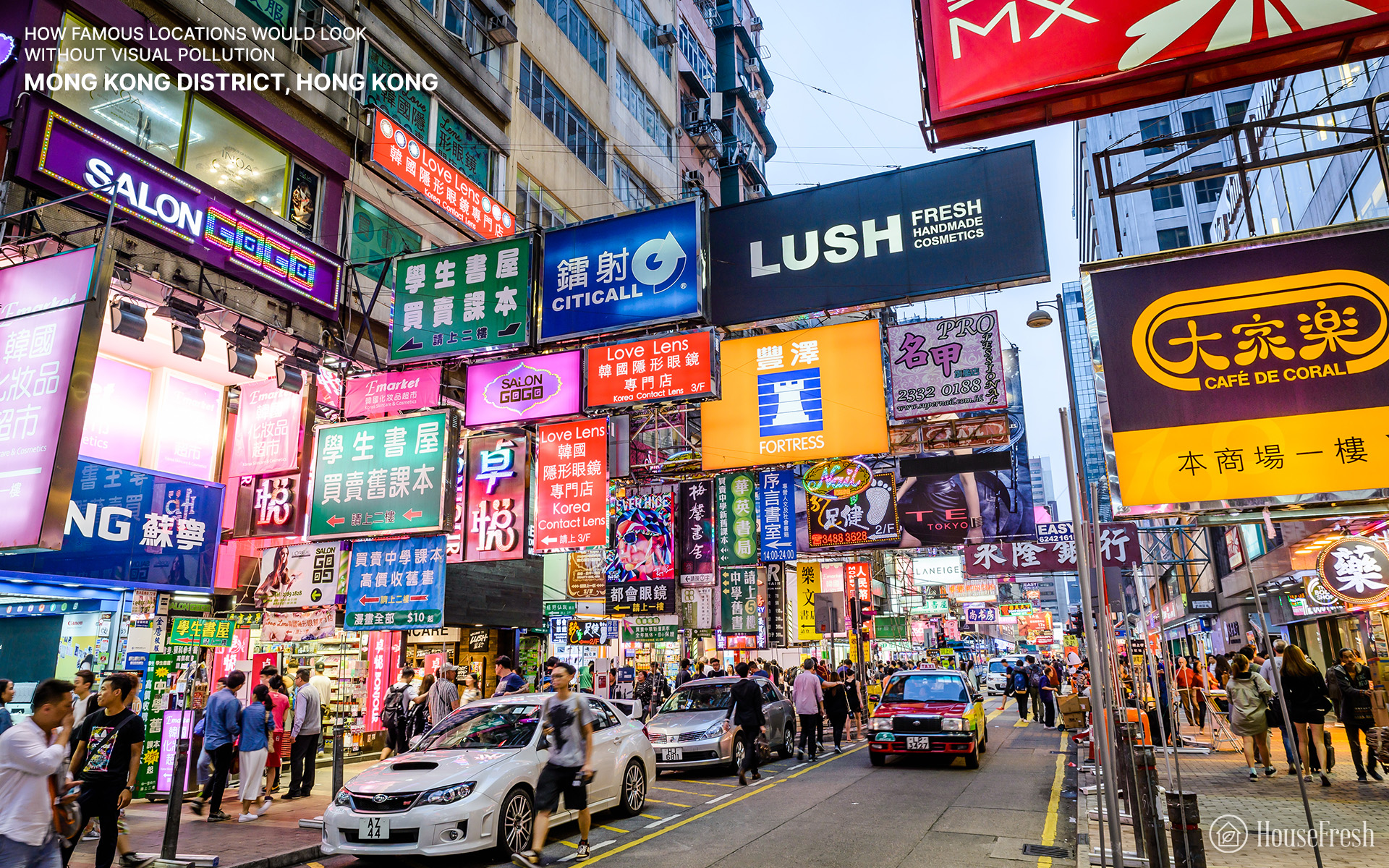
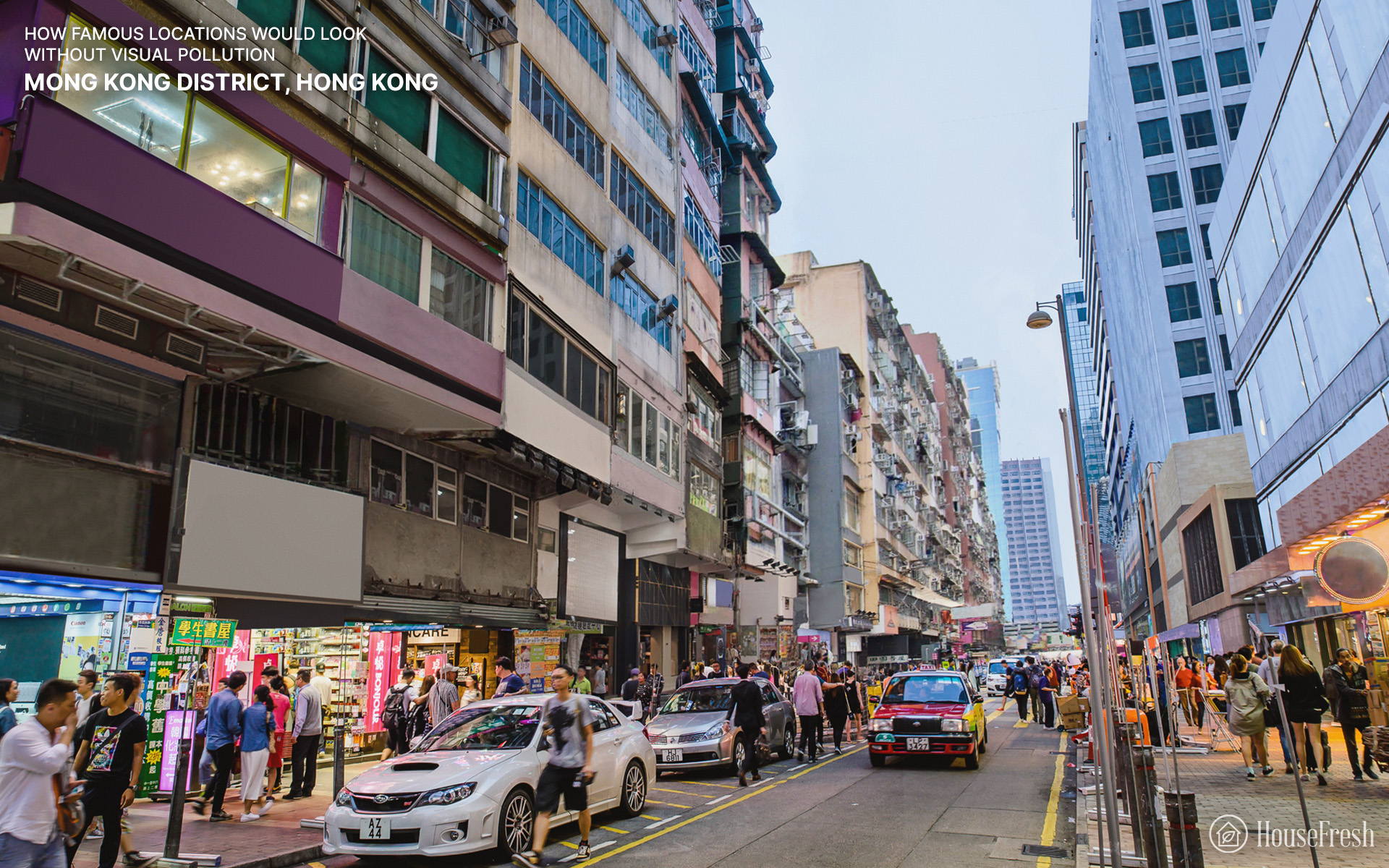
What lies beneath is hardly pretty, but it is astonishing. Mong Kok could be a much more pleasant and healthy place to live and shop if its stacked dwelling spaces got a solarpunk makeover. Or at least an exterior living wall or two.
Hollywood Boulevard, USA
Efforts to declutter LA’s visual space go back decades. But some argue that Tinseltown without the tinsel would just be like any other town: the ‘image culture’ is the city’s bread-and-butter, and the boulevard’s billboard heritage veers from kitsch iconography to high art.
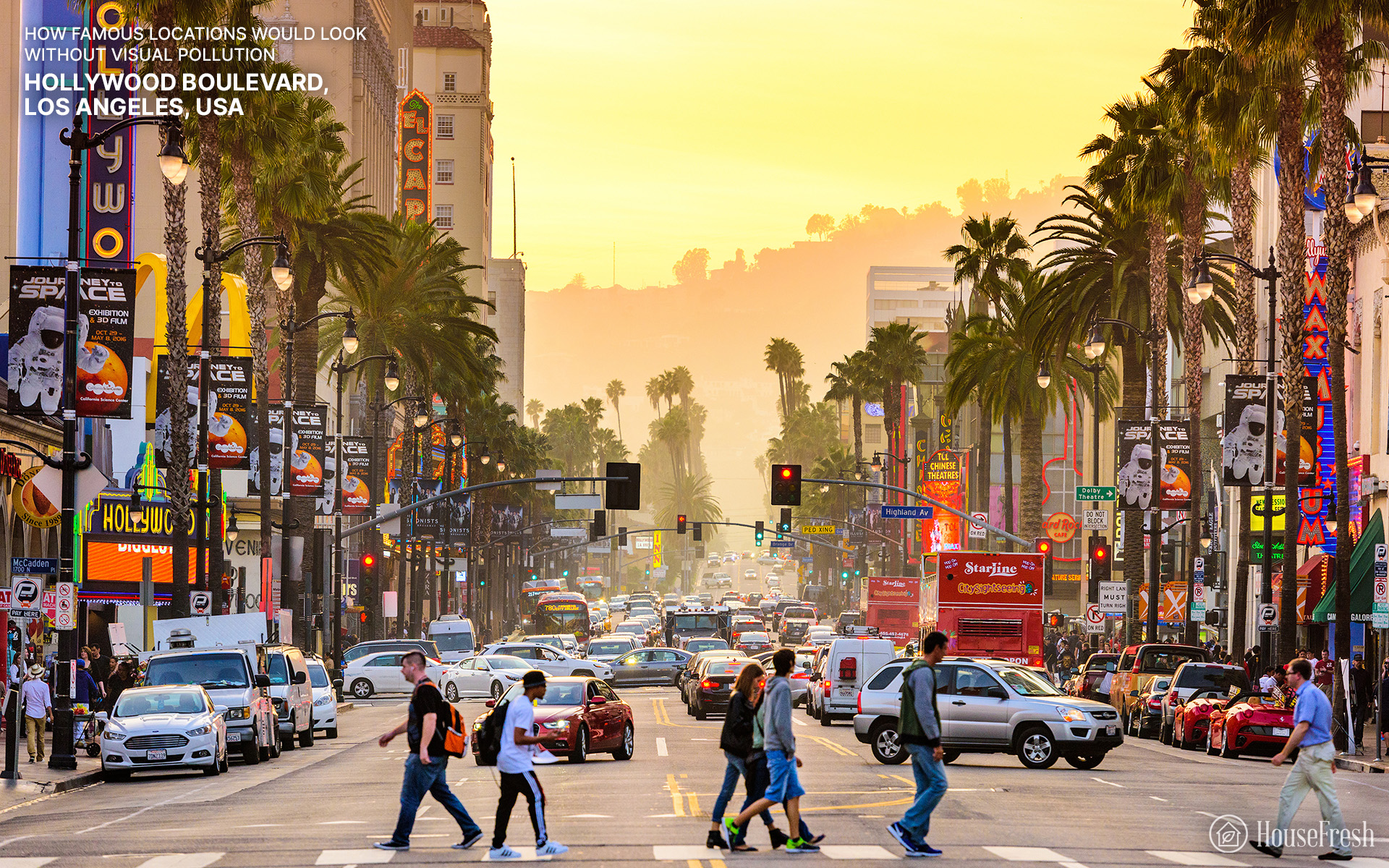

However, with palm trees, a wealth of art deco architecture, and golden sunsets, does Hollywood Boulevard really need cheesy exhibition ads and movie posters for films you probably know about already? The road looks close to paradise without them. Now, if only they’ll pedestrianize it…
Delhi, India
Visual pollution knows no limits in India’s capital. Dust and smog blight the air. Trash lands where it will. And, as our source image of this Old Delhi neighborhood shows, make-shift wiring and cables leave little room for the sort of overhanging billboards you’d find in other big cities.
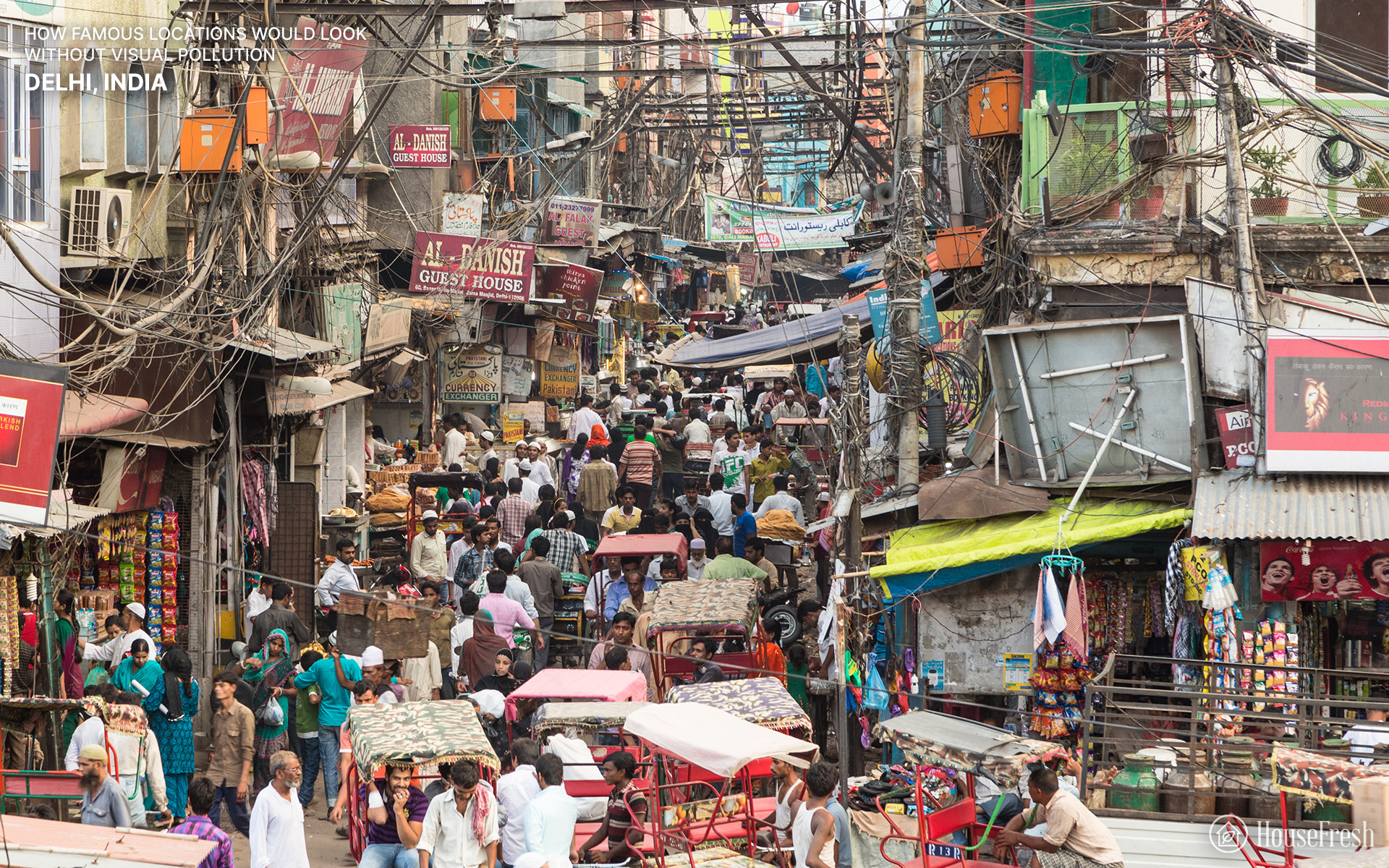
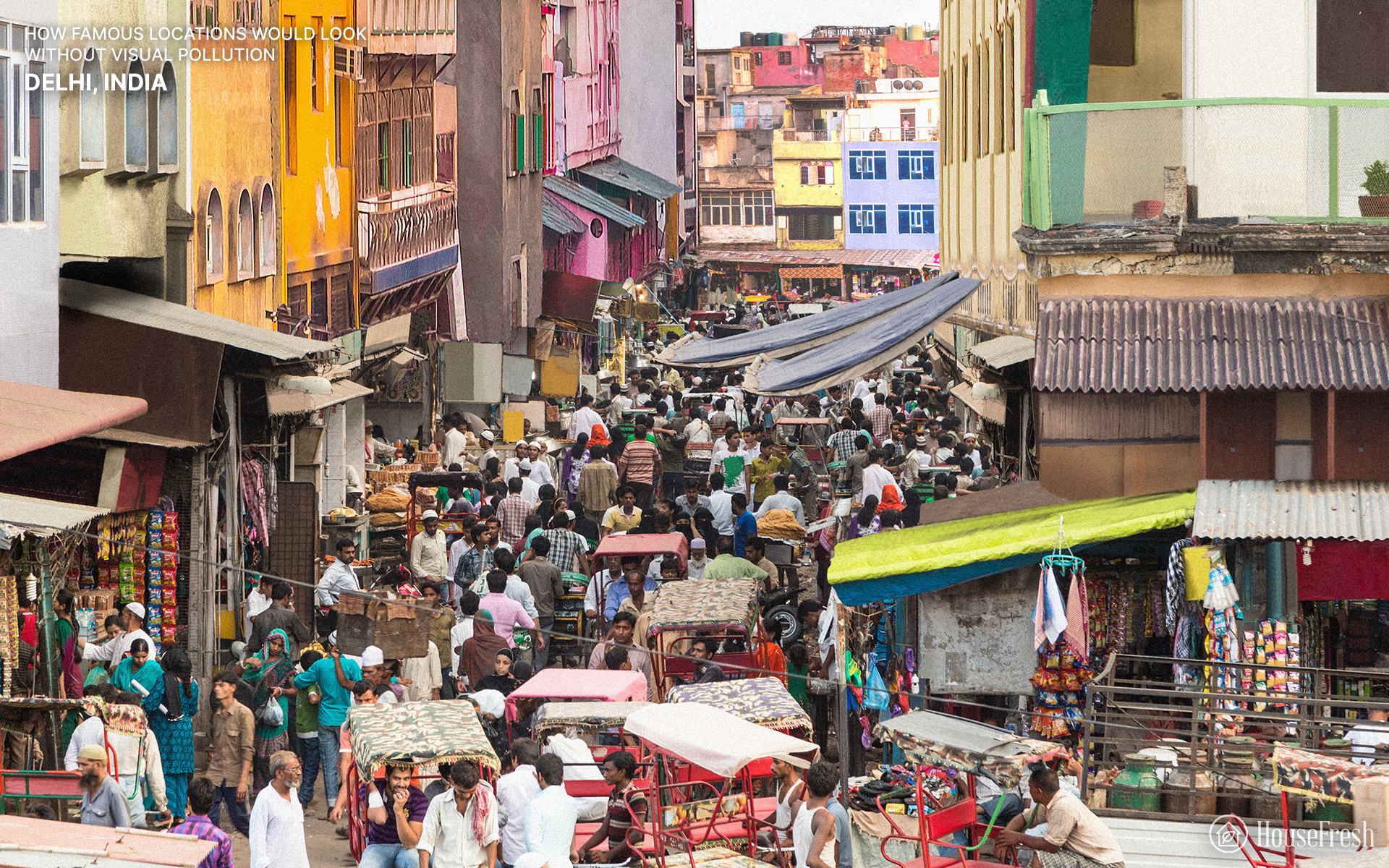
A clean-up operation has begun in some areas, where haphazard additions to the phone and power infrastructure have become one with their environment, tangling together and getting stuck solid to the buildings. On the other hand, the colorfully painted walls beyond the cables hint at another point of view: that Delhi’s hanging cables are an art form in their own right.
Times Square, New York, USA
Times Square is the literal poster child for “visual pollution.” Its glowing billboards are protected by law to conserve the ‘identity’ (and revenue) of the commercial intersection. The city requires buildings to have illuminated signage and, in the 1980s set out a requirement for new developments to put aside 5% of floor space for entertainment. Presumably, forest bathing doesn’t count as entertainment.
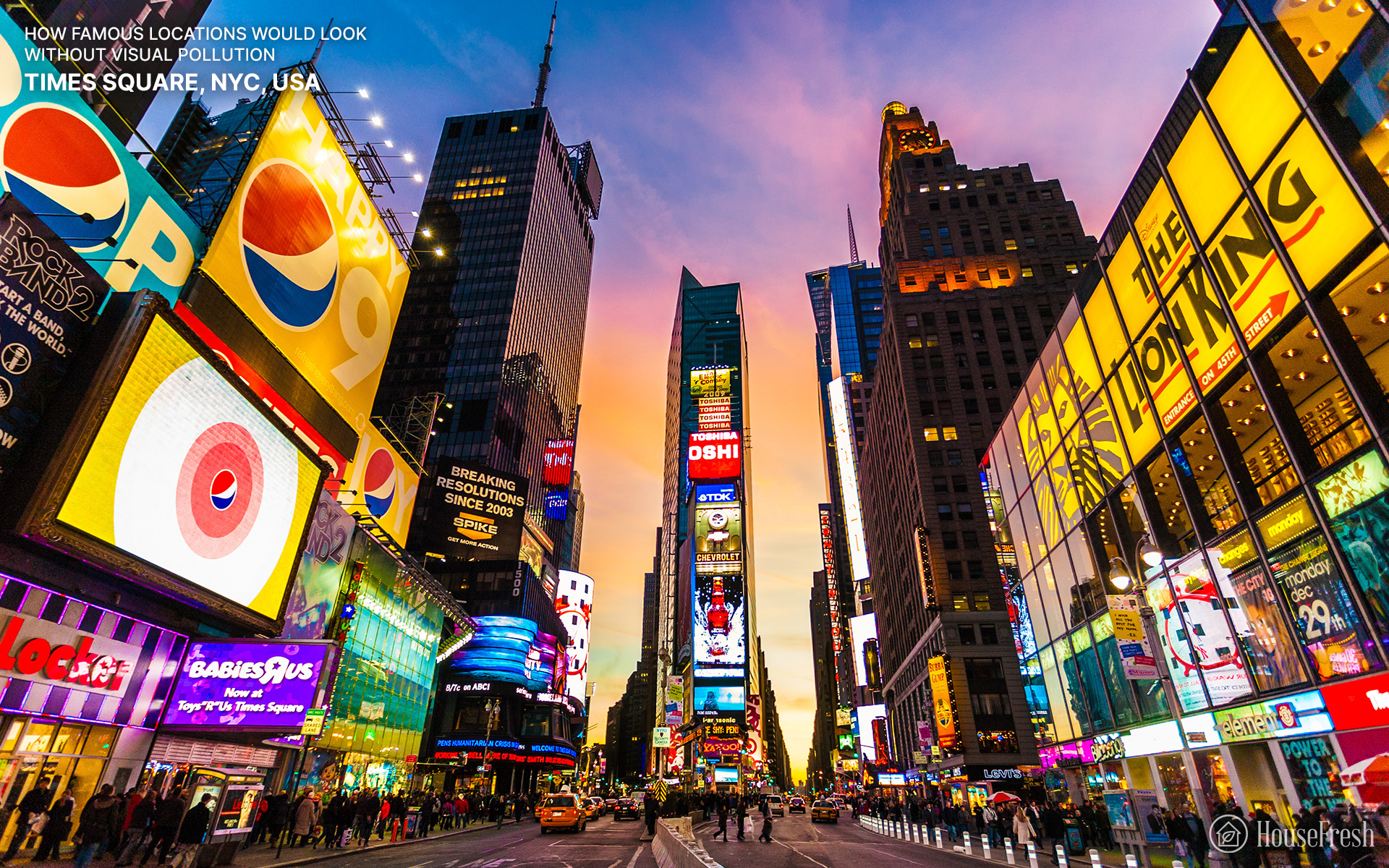
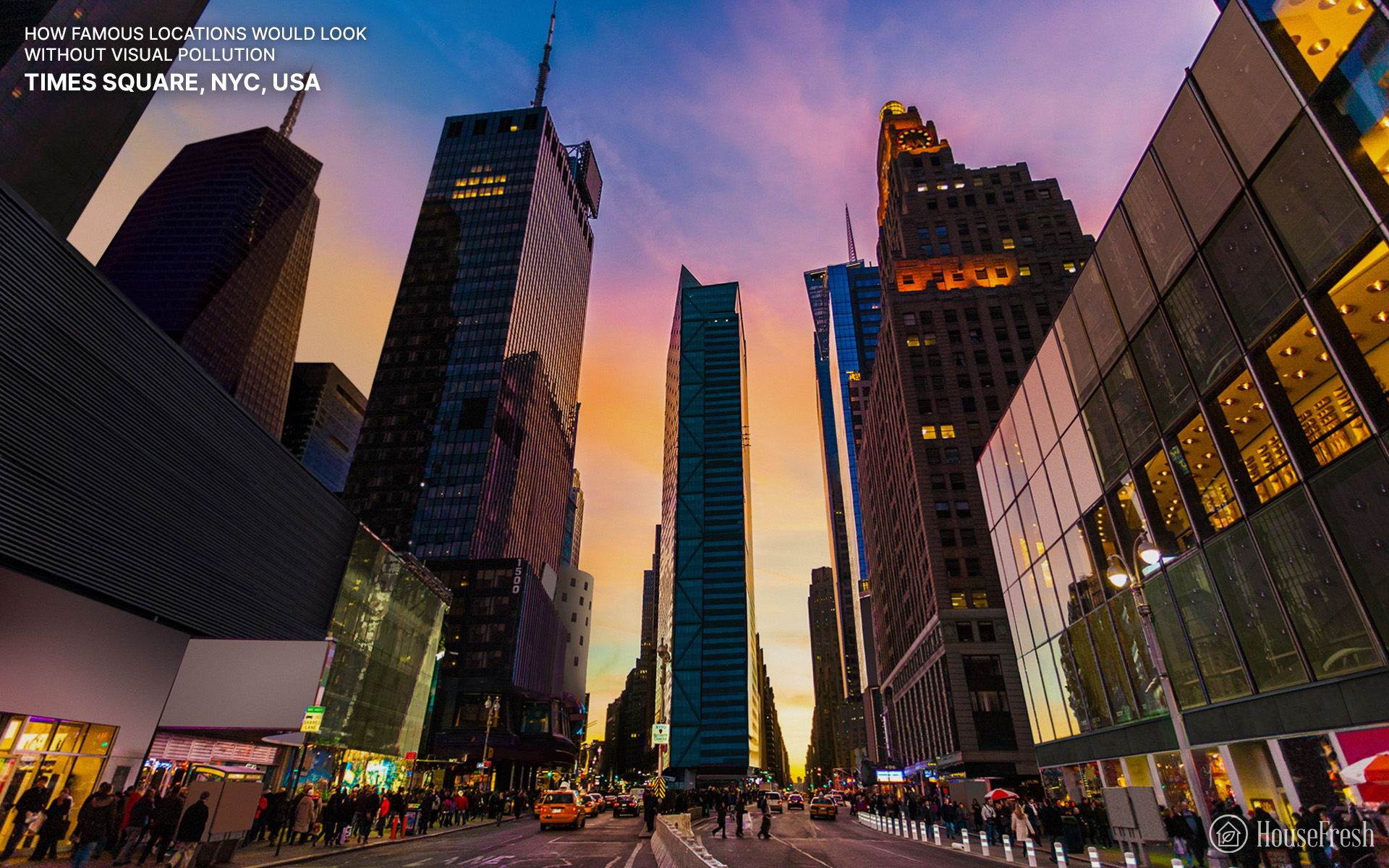
Given its unique position in the American imagination, Times Square is at the heart of the debate over whether one person’s visual pollution is another’s natural modern habitat. In fact, some argue that the square’s previous form of visual pollution — grime, aging billboards, and lurid cinema signs — is a tragic loss, having formed a welcoming backdrop for the city’s outcasts. Meanwhile, the present Times Square continues to evoke the greed and waste of the 1980s, when the square’s ‘Disneyfication’ began. Is there a more sensitive way we could freshen up that visual field for the mid-21st-century?
Kampala, Uganda
Our Ugandan before-and-after raises a question that lurks through our other visualizations: are cars “visual pollution”? We’ve left them in our pictures because their passengers are among those experiencing the visual pollution in each location. But think about how many times a car has blighted an otherwise Instagram-ready snapshot in your viewfinder — let alone left you with a buzzing head after a walk down your local high street.

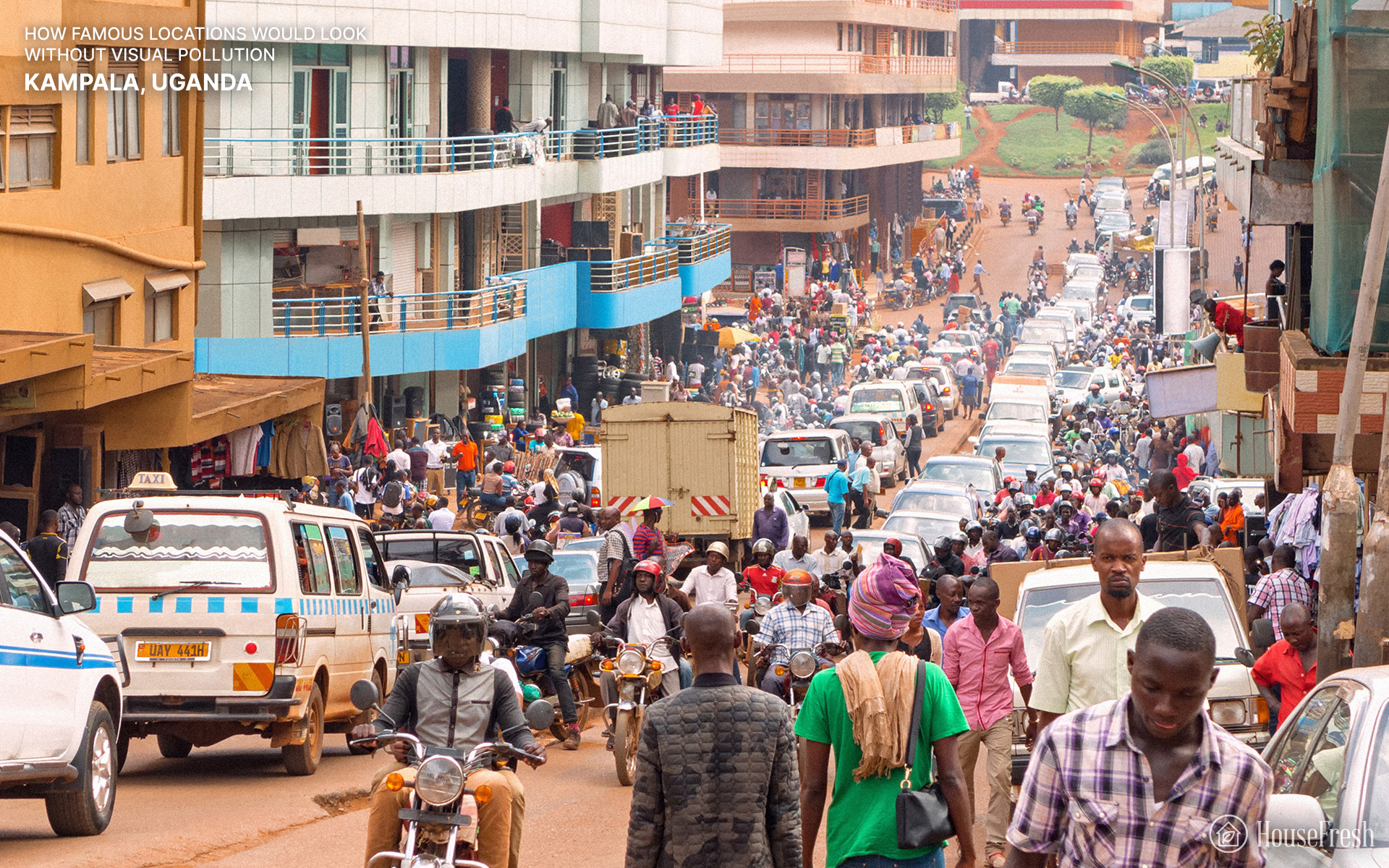
Cars are often ugly, dirty, distracting, and out of place, generating further distracting visual pollution, such as fumes, moving reflections, and extra signage. Thankfully, Kampala is tackling visual and air pollutionhead-on, having been designated Africa’s first Tree City for its efforts to plant and protect urban trees.
Las Vegas, USA
Quite what constitutes visual pollution in Las Vegas is up for debate. There would certainly be visitors who’d want their money back on arrival at our cleaned-up Vegas in the second picture. Yet, light pollution in Las Vegas is significant enough to bleach the night sky of the meteorites and stars (remember those?) you might otherwise see from the desert city.
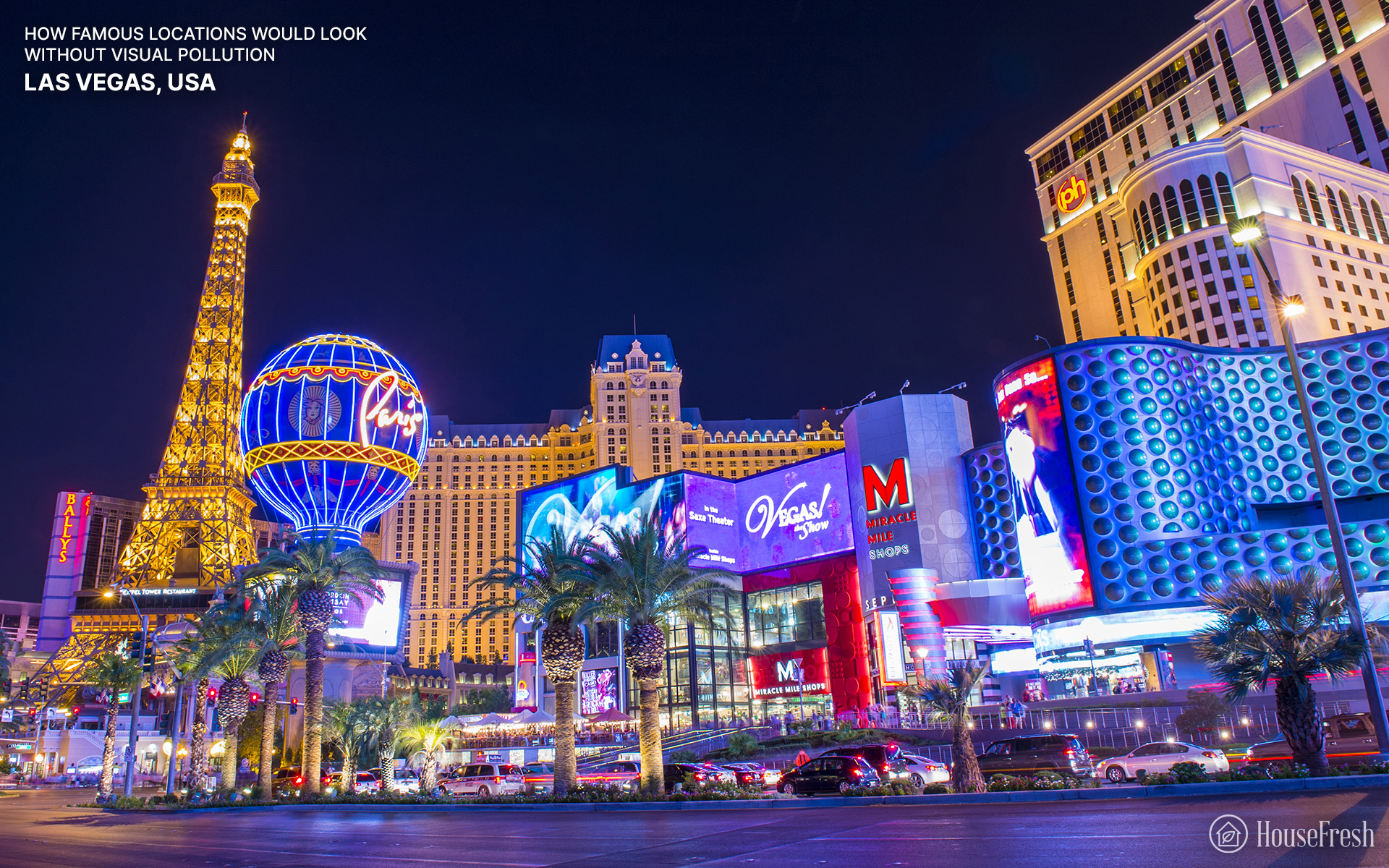
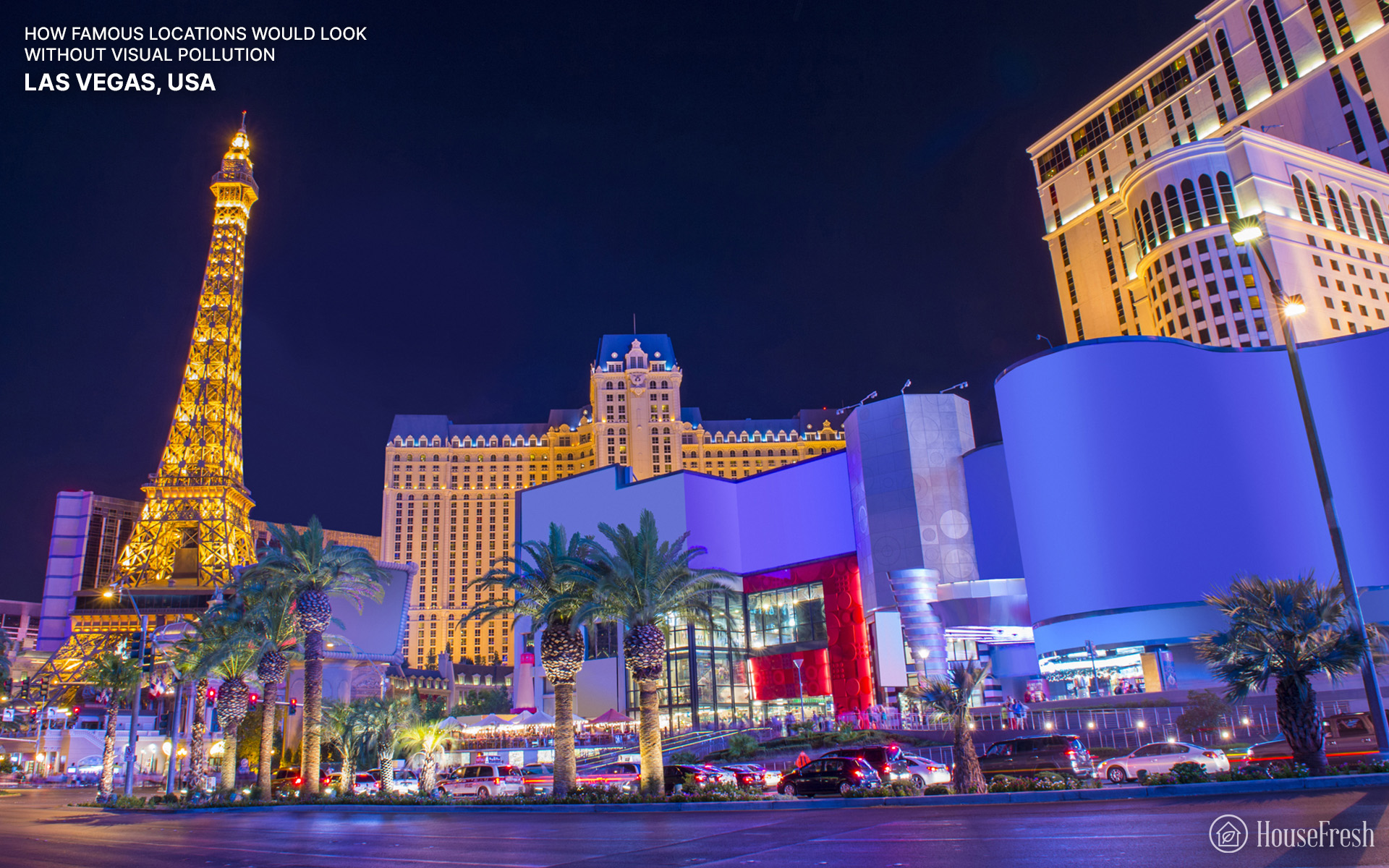
The light from Vegas spills into natural environments, disrupting the life cycles of flora and fauna. And, if part of the purpose of the Vegas lights is to disrupt gamblers’ sleep patterns and keep them awake all night, this just highlights some of the worst human effects of the phenomenon. All-night light shows might save your coffee bill, but messing with your circadian rhythms like this can lead to obesity, heart disease, diabetes, depression, and cancer.
Piccadilly Circus, London, UK
Illuminated signs have featured at this busy London transport hub since the incandescent bulbs of a 1908Perrier advert; the first neon sign appeared here in the 1940s. As early as 1928, The Times opined that “it would be a decided gain, from the aesthetic point of view, to get rid of the illuminated signs on the façades of these buildings. By day as well as by night, they are a hideous eyesore which no civilized community ought to tolerate, especially in so prominent and important a position.”

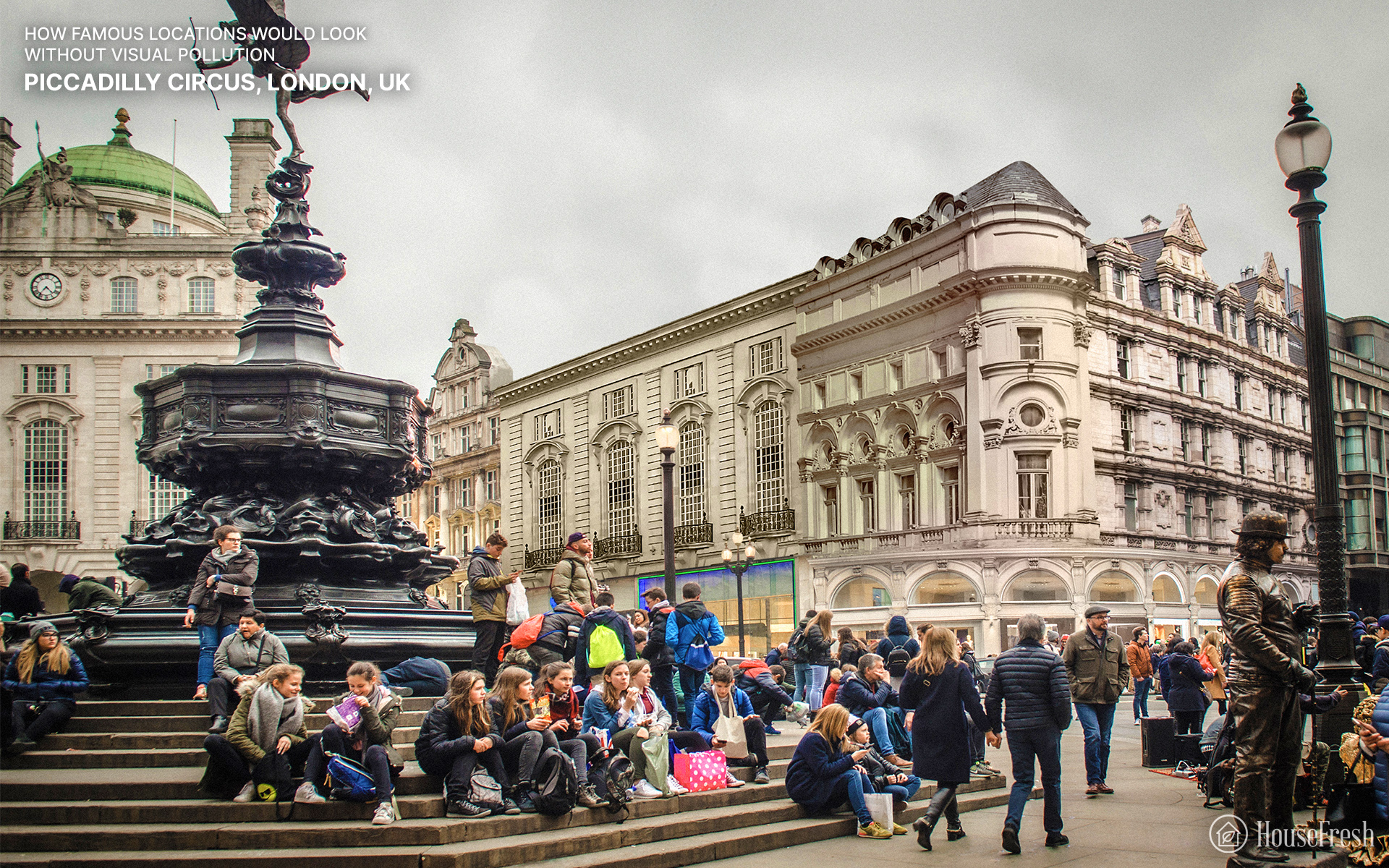
In fact, today there is only one giant sign with advertising banned from buildings owned by the Crown Estate. But the scale of this sign and the area’s importance as a junction and entertainment district means it remains known as ‘London’s Times Square.’ The advertising lights were switched off for an hour during the Lights Out London campaign in 2007 but otherwise have only dimmed for war, energy shortage, and for mourning the likes of Winston Churchill and Diana, Princess of Wales.
A World Without Billboards
When the mayor of São Paolo banned outdoor advertising and removed 15,000 billboards and 300,000 imposing store signs from the Brazilian city, the new look was rather mixed. On the one hand, locals could now use art deco frontages and handsome historical architecture to navigate the city. On the other, the ads had also covered a multitude of less handsome views of urban decay and inequality – which would, to some extent, be addressed once out in the open.
Some forms of visual pollution don’t just impose; they decorate and conceal. And while our images remove the billboards from these urban environments, they don’t propose replacements. Indeed, Times Square, in our quieter image, looks like a melancholy place, if friendlier to those vulnerable to sensory overload (with stores perhaps only identifiable through an AR eye-set).
But humans desire ornamentation and have a right to beautiful cities. In the attention economy, your eye is a battlefield, and it seems a shame to leave these decisions to those who will profit from our exploitation. In the final call, who gets to decide what visual pollution is – and what we might have instead?
Final Boarding Call
I expect this article to be as debatable as the article called 10 of the Most Beautiful City Views Ruined by Air Pollution: A Visualization, which was published here at The Gate on Sunday, April 17, 2022.
Locations such as Times Square in New York and much of Las Vegas simply would not be the same without “visual pollution”, in my opinion. In fact, they seem to look almost ridiculous without their famous dazzling array of lights. I remember the days before Times Square was “cleaned up”; and I have mixed feelings about that.
I must admit that I am impressed with the way the “after” photographs were retouched, though. That took an inordinate amount of time and effort…
Photograph ©2017 by Brian Cohen.
